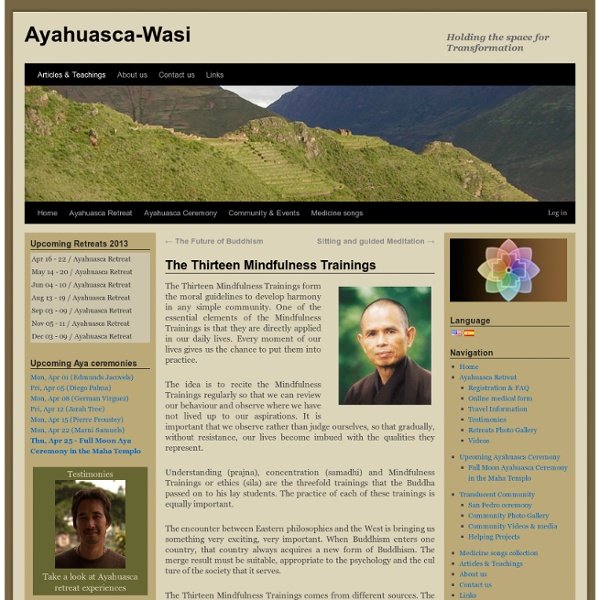The Thirteen Mindfulness Trainings

Study Guides
The Study Guides below are anthologies of readings that focus on a particular topic or theme, and are designed as aids for individual or group study. The texts are drawn from the Pali canon, teachings of the great Thai forest ajaans, and other sources. Unless otherwise indicated, they were prepared and introduced by Thanissaro Bhikkhu. Another useful collection of study materials may be found in Piya Tan's collection of "Sutta Discovery" essays and translations. Beyond Coping: The Buddha's Teachings on Aging, Illness, Death, and Separation, by Thanissaro Bhikkhu(1999; ?? Body Contemplation: A Study Guide, by Thanissaro Bhikkhu(2003; 47pp./142KB) An overview of the Buddha's teachings on contemplation of the body, and its role in the development of mindfulness, jhana, and discernment. The Five Aggregates: A Study Guide, by Thanissaro Bhikkhu(2010; 43pp./129KB) The Four Noble Truths: A Study Guide, by Thanissaro Bhikkhu(1999; 33pp./100KB)
Related:
Related:



